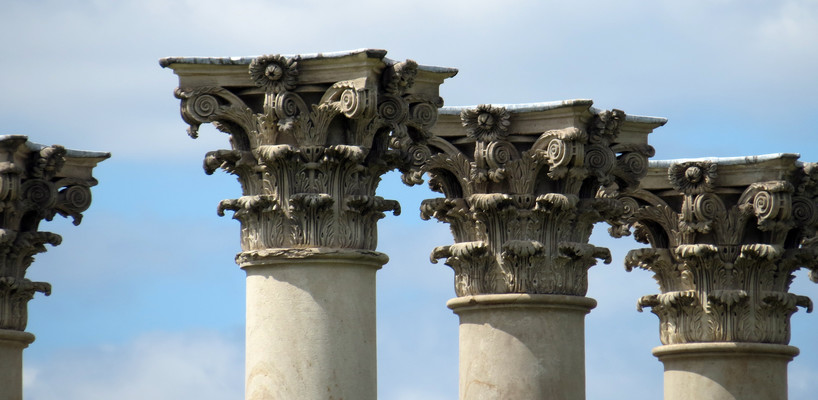
National Capitol Columns
One of Washington’s most notable and unusual landmarks is the National Capitol Columns. The stately permanence of the Corinthian columns and careful siting on a natural knoll in the Ellipse Meadow makes them seem as if they have been there for a very long time.
These columns were originally sited in the East Portico of the Capitol Building in 1828. Quarried from sandstone near Aquia Creek in Virginia, they were barged to Washington in the early days of our country before the familiar Capitol dome was completed. Their time at the Capitol was to be limited, however, because of an oversight. The dome of the Capitol, completed in 1864, appeared as if it was not adequately supported by the columns, because the iron dome that was ultimately built was significantly larger than the one that the designer had envisioned. An addition to the east side of the Capitol was proposed to eliminate this unsettling illusion, but it was not constructed until 1958. More time would pass before the columns would come to their final resting place at the National Arboretum.
It was not until the 1980s that Arboretum benefactress Ethel Garrett took up the cause of establishing a permanent home for them. Landscape designer Russell Page, a close friend of Garrett’s, visited the Arboretum in September of 1984, only months before his death. He found the perfect site for them on the east side of the Ellipse where the grandeur of the columns would be in scale with the more than 20 acres of open meadow.
The columns rest on a foundation made from steps that were also once located on the east side of the U.S. Capitol. Old identification marks from the quarry are still visible on some of the stones. A reflecting pool fed by a small rivulet of water that runs down a channel in the steps reflects the columns and provides sound and movement. You can easily walk across the Ellipse where you will find a capital, or top portion, of one of the columns. Here you can see the incredible detail of acanthus leaves that the stone carver incorporated into the design.